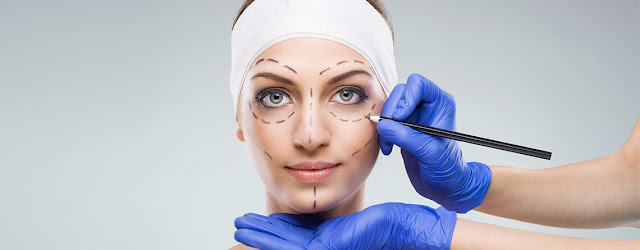Breast Infection
A breast infection, also known as mastitis, is an infection that happens inside the breast tissue. Breast infections are most common among women who breastfeed when bacteria enter and invade the breast from a baby's mouth.
This is also called mastitis in
lactation. In women who are not breastfeeding, mastitis also occurs, but this
is not as severe.
Infection usually affects the breast's fatty tissue and causes swelling, lumps and pain. Although most infections are due to breastfeeding, rare forms of breast cancer are associated with a small percentage of breast infections.
Symptoms of breast infection:
Symptoms of a breast infection
may start suddenly and may include:
- Swelling,
one breast becoming larger than the other
- Pain
- Fever,
chill
- Nipple
discharge containing pus
- Breast
is warm
- A
painful lump in your breast
- Redness
of the skin in a wedge-shaped pattern
Before you notice any changes in your breasts you can experience flu-like symptoms. If you have any combination of those symptoms, please contact your doctor.
How do you treat breast infection?
A doctor may typically diagnose
mastitis in a breastfeeding woman based on a physical exam and a review of your
symptoms. Your doctor will also want to rule out if the infection has created
an abscess that needs to be drained and can be done during the physical
examination.
If the infection begins to
return, then breast milk may be sent to a laboratory to decide what bacteria
may be present.
If you have a breast infection
and you're not breastfeeding, other tests may be needed to determine the cause.
Testing can involve a mammogram or even a breast tissue biopsy to rule out
breast cancer.
A mammogram is an imaging procedure that scans the breast using low-energy X-rays. A breast biopsy involves removing a small sample of tissue from the breast for laboratory testing to determine whether there are any changes in cancerous cells.
Treatment available for breast infection:
The most successful form of
treatment for this type of infection is usually a 10 to 14 day course of
antibiotics, and most women feel relief within 48 to 72 hours.
It is important to take all
medical products as prescribed to ensure that the infection does not happen
again. While on most antibiotics, you will continue to breastfeed, but if
breastfeeding becomes unpleasant, a breast pump can be used to reduce
engorgement and prevent loss of milk supply.
If you have an abscess due to
severe breast infection, you may need to lance and drain it. It helps the
breast recover more quickly. You may continue to breastfeed but ask a lactation
consultant or health care provider for advice on how to care for an
abscess.
If your doctor decides the
symptoms are caused by inflammatory breast cancer, they will start treatment
depending on the stage of your cancer. Care using intravenous drugs to kill
cancer cells, radiation therapy or surgery to remove lymph nodes in the breast
and surrounding areas.
Lumps and bumps are very rare cancers during breastfeeding. Usually, they are due to a plugged or swollen milk duct.
How to care breast infection at home?
You can also take steps to
relieve uncomfortable symptoms at home whilst receiving infection treatment:
- Dry
compresses can alleviate pain and may help to lactate. Try applying a dry,
wet washcloth for 15 minutes, four times a day, to the infected area.
- Breastfeed
using varied positions.
- During
breastfeeding, prevent excessive engorgement where possible. Feed or pump
when time is ripe.
Meeting with a lactation consultant to change your breastfeeding technique or position could help prevent the return of the infection.
How to prevent breast infection?
If you're breastfeeding, use
these tips to reduce breast infection
- Don't
let yourself get engorged because for feedings you're late. Pump or feed
- Avoid
abrupt feeding schedule changes.
- Avoid
the use of soap and intense nipple cleaning. The areola has the ability to
self clean and lubricate.
- Massage
your breasts, especially if you feel a lump or thickening.
- Before
feeding, apply dry, moist towels to the breast to improve milk flow.
- When you feel a plugged duct try to breastfeed, rub the breast, add heat and adjust the location of the infant.
What are the long term prospects for breast infection?
Check with a doctor if you're
breastfeeding and have a recent history of plugged ducts, and experience
flu-like symptoms, fever, and redness and heat pain in the
breast. Antibiotics in the treatment of an infection are very successful.
You will probably feel better within two days of starting the antibiotics, but
it is important to finish the whole antibiotic course. The chosen antibiotics
are safe for continued breastfeeding.
You can reduce your risk of recurrence by taking diligent self-care and adhering to the directions of your doctor.
To know more information about
Breast infection Contact Dr. Priyadarshan Plastic and Cosmetic Center in Bangalore. Give a call now at -
Dr. Priyadarhan is an eminent Plastic Surgeon in Bangalore having expertise in all forms of breast surgeries. He holds a high repute for his world-class breast implants and breast lift surgical procedures. He undertakes all types of breast surgeries such as augmentation, breast uplifts and breast reductions. Apart from this, Dr. Priyadarhsan is highly reputed for his expertise in undertaking breast cancer surgeries successfully.



Comments
Post a Comment